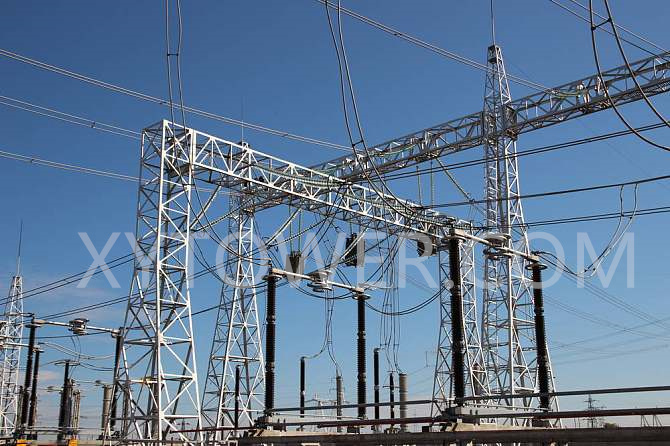The structure of a substation can be designed using either concrete or steel, with configurations such as portal frames and π-shaped structures. The choice also depends on whether the equipment is arranged in a single layer or multiple layers.
1. Transformers
Transformers are the main equipment in substations and can be categorized into double-winding transformers, three-winding transformers, and autotransformers (which share a winding for both high and low voltage, with a tap taken from the high voltage winding to serve as the low voltage output). The voltage levels are proportional to the number of turns in the windings, while the current is inversely proportional.
Transformers can be classified based on their function into step-up transformers (used in sending substations) and step-down transformers (used in receiving substations). The voltage of the transformer must match the voltage of the power system. To maintain acceptable voltage levels under varying loads, transformers may need to switch tap connections.
Based on the tap switching method, transformers can be categorized into on-load tap-changing transformers and off-load tap-changing transformers. On-load tap-changing transformers are primarily used in receiving substations.
2. Instrument Transformers
Voltage transformers and current transformers operate similarly to transformers, converting high voltage and large currents from equipment and busbars into lower voltage and current levels suitable for measurement instruments, relay protection, and control devices. Under rated operating conditions, the secondary voltage of a voltage transformer is 100V, while the secondary current of a current transformer is typically 5A or 1A. It is crucial to avoid opening the secondary circuit of a current transformer, as this can lead to high voltage that poses risks to equipment and personnel.
3. Switching Equipment
This includes circuit breakers, isolators, load switches, and high-voltage fuses, which are used to open and close circuits. Circuit breakers are used to connect and disconnect circuits during normal operation and automatically isolate faulty equipment and lines under the control of relay protection devices. In China, air circuit breakers and sulfur hexafluoride (SF6) circuit breakers are commonly used in substations rated above 220kV.
The primary function of isolators (knife switches) is to isolate voltage during equipment or line maintenance to ensure safety. They cannot interrupt load or fault currents and should be used in conjunction with circuit breakers. During power outages, the circuit breaker should be opened before the isolator, and during power restoration, the isolator should be closed before the circuit breaker. Incorrect operation can lead to equipment damage and personal injury.
Load switches can interrupt load currents during normal operation but lack the capability to interrupt fault currents. They are typically used in conjunction with high-voltage fuses for transformers or outgoing lines rated at 10kV and above that are not frequently operated.
To reduce the footprint of substations, SF6-insulated switchgear (GIS) is widely used. This technology integrates circuit breakers, isolators, busbars, grounding switches, instrument transformers, and cable terminations into a compact, sealed unit filled with SF6 gas as an insulating medium. GIS offers advantages such as compact structure, lightweight, immunity to environmental conditions, extended maintenance intervals, and reduced risk of electric shock and noise interference. It has been implemented in substations up to 765kV. However, it is relatively expensive and requires high manufacturing and maintenance standards.
4. Lightning Protection Equipment
Substations are also equipped with lightning protection devices, primarily lightning rods and surge arresters. Lightning rods prevent direct lightning strikes by directing the lightning current into the ground. When lightning strikes nearby lines, it can induce overvoltage within the substation. Additionally, operations of circuit breakers can also cause overvoltage. Surge arresters automatically discharge to the ground when overvoltage exceeds a certain threshold, thereby protecting equipment. After discharging, they quickly extinguish the arc to ensure normal system operation, such as zinc oxide surge arresters。

Post time: Oct-25-2024





